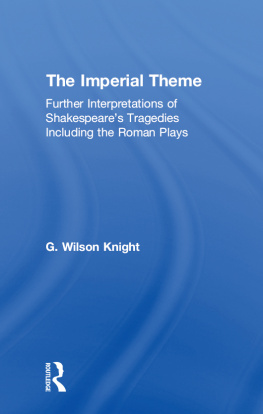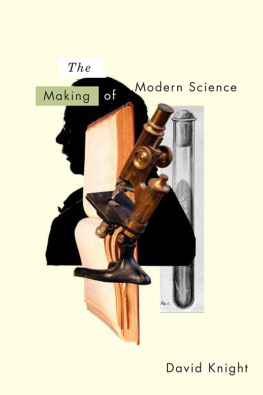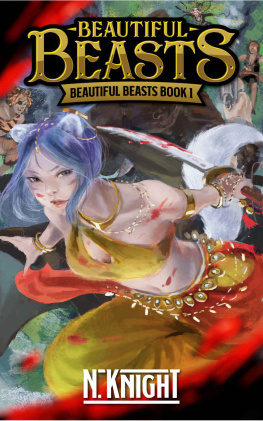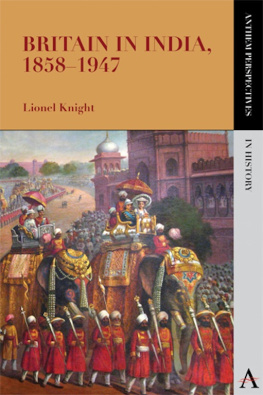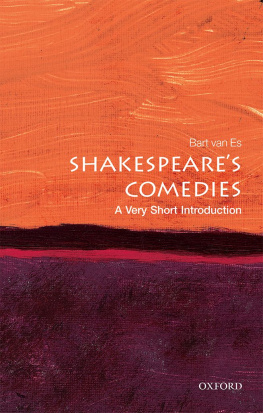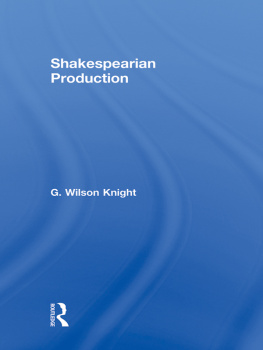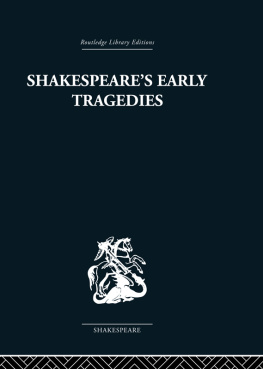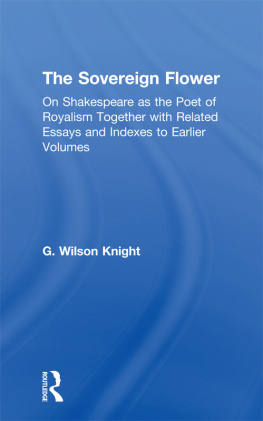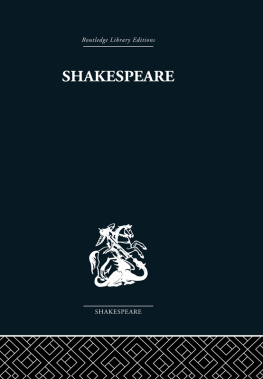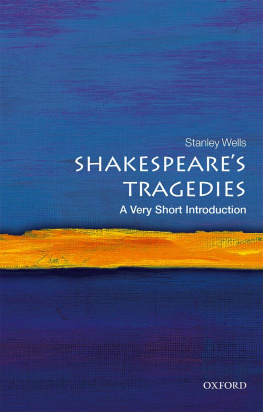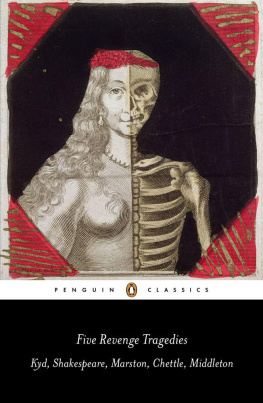Knight - Imperial Theme: Wilson Knight
Here you can read online Knight - Imperial Theme: Wilson Knight full text of the book (entire story) in english for free. Download pdf and epub, get meaning, cover and reviews about this ebook. publisher: Routledge, genre: Romance novel. Description of the work, (preface) as well as reviews are available. Best literature library LitArk.com created for fans of good reading and offers a wide selection of genres:
Romance novel
Science fiction
Adventure
Detective
Science
History
Home and family
Prose
Art
Politics
Computer
Non-fiction
Religion
Business
Children
Humor
Choose a favorite category and find really read worthwhile books. Enjoy immersion in the world of imagination, feel the emotions of the characters or learn something new for yourself, make an fascinating discovery.
- Book:Imperial Theme: Wilson Knight
- Author:
- Publisher:Routledge
- Genre:
- Rating:5 / 5
- Favourites:Add to favourites
- Your mark:
- 100
- 1
- 2
- 3
- 4
- 5
Imperial Theme: Wilson Knight: summary, description and annotation
We offer to read an annotation, description, summary or preface (depends on what the author of the book "Imperial Theme: Wilson Knight" wrote himself). If you haven't found the necessary information about the book — write in the comments, we will try to find it.
Knight: author's other books
Who wrote Imperial Theme: Wilson Knight? Find out the surname, the name of the author of the book and a list of all author's works by series.
Imperial Theme: Wilson Knight — read online for free the complete book (whole text) full work
Below is the text of the book, divided by pages. System saving the place of the last page read, allows you to conveniently read the book "Imperial Theme: Wilson Knight" online for free, without having to search again every time where you left off. Put a bookmark, and you can go to the page where you finished reading at any time.
Font size:
Interval:
Bookmark:

G. WILSON KNIGHT
COLLECTED WORKS
G. WILSON KNIGHT
COLLECTED WORKS
VOLUME I
THE IMPERIAL THEME
Further Interpretations of Shakespeares Tragedies Including the Roman Plays

First published 1931 by Oxford University Press
This edition published 2002 by Routledge
2 Park Square, Milton Park, Abingdon, Oxon OX14 4RN
Simultaneously published in the USA and Canada
by Routledge
270 Madison Avenue, New York, NY 10016
Routledge is an imprint of the Taylor & Francis Group
Transferred to digital printing 2010
Typeset in Times New Roman by
Keystroke, Jacaranda Lodge, Wolverhampton
All rights reserved. No part of this book may be reprinted or reproduced or utilised in any form or by any electronic, mechanical, or other means, now known or hereafter invented, including photocopying and recording, or in any information storage or retrieval system, without permission in writing from the publishers.
British Library Cataloguing in Publication Data
A catalogue record for this book is available from the British Library
Library of Congress Cataloging in Publication Data
A catalog record for this book has been requested
ISBN 978-0-415-27896-6 (Set)
ISBN 978-0-415-29070-8 (Volume I) (hbk)
ISBN 978-0-415-60661-5 (Volume I) (pbk)
Publishers Note
The publisher has gone to great lengths to ensure the quality of this
reprint but points out that some imperfections in the original book may be apparent.
The Imperial Theme
FURTHER INTERPRETATIONS OF S HAKES PEARES TRAGEDIES INCLUDING THE ROMAN PLAYS
BY
G. WILSON KNIGHT
Emeritus Professor of English Literature in the University of Leeds Formerly Chancellors Professor of English, Trinity College, Toronto
Two truths are told,
As happy prologues to the swelling act
Of the imperial theme.
MACBETH, I. iii. 127.
Look down, you gods,
And on this couple drop a blessed crown!
For it is you that have chalkd forth the way Which brought us hither.
THE TEMPEST, V. i. 201.
METHUEN & CO. LTD
11 NEW FETTER LANE, EC4
T HIS, my second main Shakespearian volume, was first published in 1931 and went out of print some ten years later. In re-issuing it I shall not preserve the original preface, which was unnecessarily burdened by references to other writers of the moment, not, for the most part, as acknowledgments, but prompted rather by the desire to feel my own investigations as part of a general movement. I have, however, been since forced to realise that they constituted a more lonely statement than that preface suggested, and one which is even now subject to a number of misunderstandings. It may therefore be as well, from a later perspective, to attempt a general clarification of their relationship to the work of others.
As I have recently suggested in my prefatory note to the enlarged re-issue of The Wheel of Fire, these investigations can be considered to lie directly in the tradition of A. C. Bradleys Shakespearean Tragedy, which is too often wrongly supposed to have been limited to the minutiae of characterisation. But they also offered something new, particularly in what might be defined as the willingness, or even will, to find in great literature significances that may best, to challenge the opposition and avoid all misunderstanding, be called mystical. The new patterns unrolled with suddenness and inevitability; but it is right to record here that the thought-atmosphere in which this happened may be related to the early writings of Middleton Murry, and in retrospect I subscribe to the general acknowledgment made on the appearance of my first published workexcept for articlesMyth and Miracle (1929; afterwards incorporated into The Crown of Life). The reading of the Final Plays presented in Myth and Miracle was itself new, and had before that been searching, without success, for recognition; but Mr. Murrys general approach and militant support during those years of what might be called the religious content of great poetry served as a stimulus and an encouragement, if not more. Indeed, my final understanding of the positive impact of Antony and Cleopatra owed something to an article of his in The Times Literary Supplement; and my stress on its theme of loyalty to an essay in Discoveries (see pp. 264, 326 below). There were, however, certain serious divergences, and these quickly appeared. I favoured a new precision in the handling of imagery and symbol that was repellent to the more romantically minded, who felt that I was in danger of reducing mystery to dogma. I have on occasion wondered that my insistence on the unity of the Shakespearian play has not been criticisedespecially where the theory of production is the argumentas an attempt to turn a romantic dramatist into a writer of classic form. But, though intellectual in technique, my work was never so in either origin or purpose. It has, it is true, been sometimes associated with what is often, if inexactly, called the Cambridge school of literary criticism, headed by such names as T. S. Eliot, I. A. Richards and, later, F. R. Leavis, if writers so different may be grouped together; and my first main volume enjoyed the favour of Mr. Eliots introduction. I would, however, emphasise once again that poetic interpretation, as I see it, is to be firmly distinguished from criticism. The critic is, and should be, cool and urbane, seeing the poetry he discusses not with the eyes of a lover but as an object; whereas interpretation deliberately immerses itself in its theme and speaks less from the seats of judgement than from the creative centre. It deliberately aims to write of genius from the standpoint not of the reader, but of genius itself; to write of it from within. So, while the critic stands on his guard against the lure of the unknown and prefers not to adventure too far from home, interpretation, it must be confessed, is happiest among the vast open spaces of what is, nevertheless, a severely disciplined speculation.
Such a work of disciplined speculation was Colin Stills book on the symbolism of The Tempest called Shakespeares Mystery Play (1921; revised and re-issued under the title The Timeless Theme, 1936), which remains today a too little recognised land-mark in Shakespearian studies. Stills book was brought to my notice by himself on the appearance of Myth and Miracle in 1929, and thenafter it remained part of my general equipment. Years later I found among my papers a jotting on a review of its first appearance; so his thesis, at least in outline, had apparently been in my mind yet earlier. I would take this opportunity of again drawing attention to a neglected study.
My present remarks are prompted by fear of misunderstanding. Mr. Stanley Hyman, writing in The Kenyon Review for Winter 1948, has recently been at pains to argue that my work from The Imperial Theme onwards owed much to the imagistic studies of Caroline Spurgeon. As I pointed out in my reply (Winter 1949), this was never so. Her pamphlet Leading Motives in the Imagery of Shakespeares Tragedies appeared in the same year, 1930, as The Wheel of Fire, followed by another, Shakespeares Iterative Imagery, balancing The Imperial Theme in 1931. Though I should probably have preferred not to, it seemed a duty to read her work as it appeared, and whenever any detail of her discovery lay within the area of my own rapidly unfolding interpretations, I tended to see itas, variously, on pages 176, 208 and 244 belowas a debt. This was the more natural since our relations were most friendly. She had written to me on the publication of
Next pageFont size:
Interval:
Bookmark:
Similar books «Imperial Theme: Wilson Knight»
Look at similar books to Imperial Theme: Wilson Knight. We have selected literature similar in name and meaning in the hope of providing readers with more options to find new, interesting, not yet read works.
Discussion, reviews of the book Imperial Theme: Wilson Knight and just readers' own opinions. Leave your comments, write what you think about the work, its meaning or the main characters. Specify what exactly you liked and what you didn't like, and why you think so.

